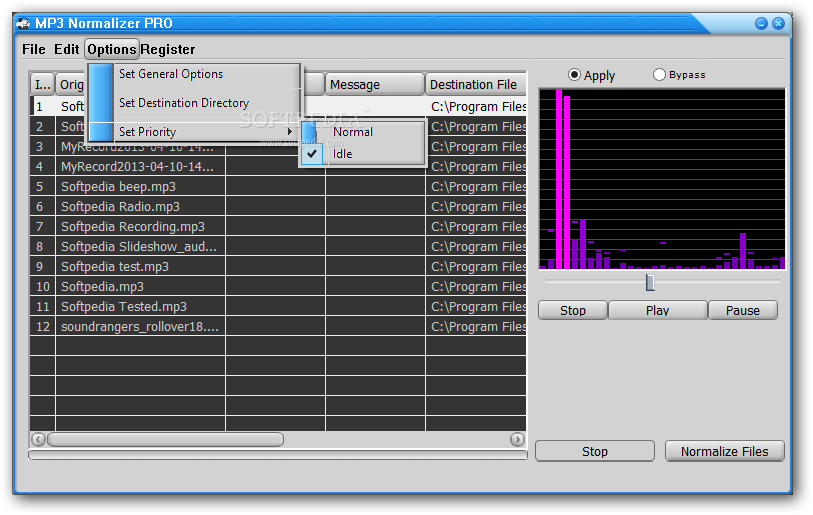


RMS (Root-Mean-Square) - changes the value of all the samples, where their average electrical volume overall is a specified level.loudness normalization - adjusts the recording based on perceived loudness.peak normalization - helps adjust the recording based on the highest signal level present in the recording.So, what are the types of audio normalization? Here you have it: To remove sharp spikes in volume for consistent listening experience for our audiences.To adjust the volume of podcast to be at a consistent level with one another.To make different music styles sound more cohesive.So, why, and when, do we need to normalize our tracks? Whenever you have a variety of audio clips that would sound too loud or soft if listened to together, an audio normalizer helps you create a more cohesive listening experience. Mostly, audio normalizers are used for balancing out the volume of music, podcast, or other audio recordings. So, normalizing the audio kind of means balancing the volume of the track. So, in this case, you need to normalize before it becomes too loud and needs more and more fixing. The more severe it is, the more distorted the music begins to sound) that could occur in your mix. In the case of mixing, listen for any clipping (A form of waveform distortion - It sounds like the audio is starting to 'break up,' which is light distortion. You can use this tool when mixing or editing your music, or during playback on your speakers. This is done so that all the parts of the sound mix remain at equal volume levels. For example, -18 dBFS (decibels relative to full scale). Well, then, let’s answer all of them!Īudio Normalization means that the loudest parts of an audio signal are set to a specific value.
#Mp3 normalizer wondershare how to#
What is Audio Normalization, what are its different types, why do we need it and how to do it online? – these are the questions we might ask when first learning about it.


 0 kommentar(er)
0 kommentar(er)
